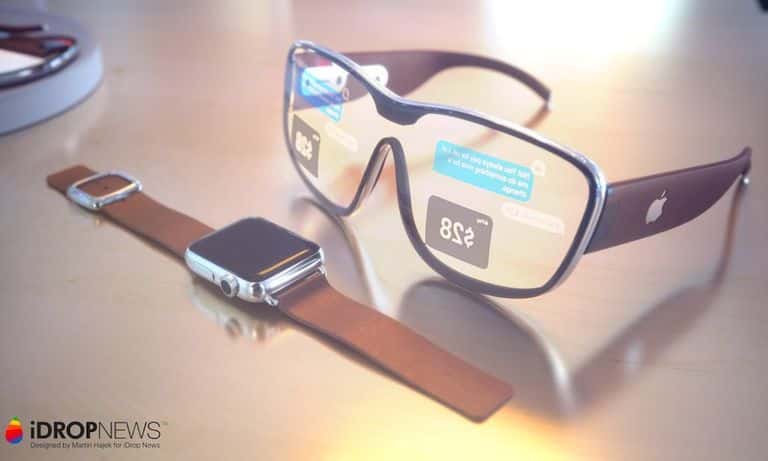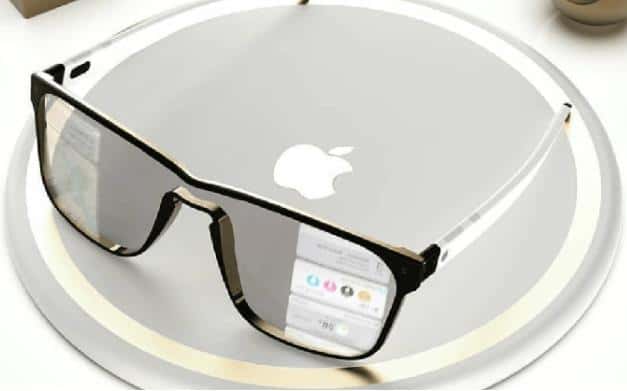Tim Cook is famous for predicting the future of augmented reality (AR), a technology that overlays digital images onto the physical world, typically a tablet or smartphone. The company CEO also said in 2016 that one day it would become as routine as “eating three meals a day.” Bounce four years ahead, and there are vast numbers of leaks and rumors that the company is trying to get into the AR game — specifically, through the glasses of a new type of eyewear, supposedly called Apple Smart Glass.
The AR-glasses ideas and theories most visible loss came from Google back in 2014. But with an additional nine years behind its belt and equipped with the experiences from Google’s unsuccessful augmented reality project, and could have a severe chance first to introduce the Apple smart Glass to the marketplace.
What are the key features that Apple Smart Glass will have?
Just think of Smart Glass as your iPhone partner. For some instances, phones are indeed a second screen, so the eyeglasses could be called your third screen, bringing details straight into your eyes from your camera. These glasses will get a holographic display, as per a Bloomberg article. Along with these lenses, Apple Glass can show everything in the user’s vision from the email text charts and games.
Many rumors indicate that the company plans to create a separate App Store for this smart Glass and a genuinely unique operating system, probably called glasses. This is compatible with Apple TV and tvOS, Apple Watch, and watchOS.
There are also two Apple patents claiming the company is working on an optical vision correction device, indicating the Apple Smart Glass removes the need for prescription glasses or contact lenses. According to Patently Apple, which first noticed the patents, the device would fix everything from vision issues to eyesight and blindness.
Specifications
In short, no one exactly knows about the Apple Smart Glass specifications. But some product reviewers like Tom’s Guide have provided some theories focused on the state-of-the-art smart glasses like Microsoft’s Hololens 2. The glasses would likely have as a minimum the same field of view as the Hololens 2, coming in at 52 degrees of vision and 47 pixels-per-inch resolution.
If Apple Smart Glass plans to continue pursuing real augmented reality, rather than showing purely floating 2D notifications in the lenses, they will likely require some connectivity to the iPhone. Therefore, like the early Apple Watch versions, the iPhone will do the actual video processing, keeping the onboard computation to a minimum in the glasses themselves.
The iPhone might send 3D imagery back to the lenses at a high frame rate per second. In that case, Bluetooth wouldn’t make sense since these bandwidths are too high for handling.
If the tech giant wishes to contend neck and neck with the HoloLens 2 or Magic Leap 1, the battery life will probably be a minimum of three hours. Apple can also extend the battery life with a particular glass charge case, similar to what the company has done with AirPods, thus increasing the battery life in a specific context.
How does Apple Smart Glass look like?

According to Tom’s Guide, Apple Smart Glass promotional materials indicate that the glasses will give off a Clark Kent-like vibe. Still, the prototypes are supposedly looking like an “un-intimidating” pair of plastic frames.
To the right side, there is a lidar scanner, most likely to help scan the natural area to help accurately add 3D images, but so far, no cameras (thanks for goodness).
There are no plans to do the first run of Apple Glass in different tinted styles, so if transformation lenses or prescription sunglasses are your things, you will have to wait much longer. Yet like the iPhone, there is reason to hope that, with time, you will have more options.
When will the Apple Smart Glass be launched?
The answer is a total mystery. Ming-Chi Kuo, a famous Apple leaker of all things, has tweeted earlier that he doesn’t think Apple Smart Glass will be available at the company’s September event this year. Then, he believes they will be launched in 2022.
Jon Prosser, another Apple leaker analyst who has several accurate predictions, says Apple Glass is due to launch by 2021. He thinks Apple will introduce the product in a similar tone to the Apple Watch in its earliest times before actually selling them out
Another possibility which is based on a report seen privately at Apple leaked to The Details and Bloomberg. Those products set a date for launch in 2023. So, in short, no one knows when Apple Smart Glass will be available, but it’s likely going to be around the coming three years.
How much Apple Smart Glass will cost
According to Prosser, the glasses will cost you $499 at the sale, plus the price of any additional prescription that must be taken into account by the optical company. That’s a lot cheaper than Hololens 2, from Microsoft, which costs a whopping $3,500. The low price probably has to do with the fact that no onboard device is needed — the iPhone will handle that.
Apple Smart Glass main competitors
The biggest rivals in the smart glass room at the moment include the Magic Leap 1; Snap reveals, a new pair of Facebook glasses currently under production, the latest edition of Google Glass (the lenses are primarily for commercial use), and the Hololens 2.
Amazon is reportedly now in the fray, working on a new device called Echo Frames, currently in beta. They use the Alexa voice assistant to provide you with details but do not appear to rely on any holographic lenses or augmented reality.
So far, very few of the available commercially glasses have also been breakaway hits. Still, it is feasible that Apple could switch that and make smart glasses into a new category of products. After all, the company tends to adopt a more cautious approach to its upcoming products, frequently rolling out innovation already pursued by other companies but with a sleeker and more elegant design.
Plus, getting a group of dedicated brand fans ready to absorb the product yesterday doesn’t hurt.
Check out: Apple is planning to release its first AR headset in 2023

